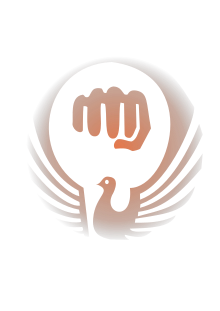Wadō-ryū

The flag of Wadō-ryū.
|
|
| Date founded | 1934 |
|---|---|
| Country of origin |
|
| Founder |
Hironori Ōtsuka (1892–1982) |
| Current head | Three independently-led organizations: Wadōkai • Wadō Kokusai • Wadō-ryū Karate-dō Renmei |
| Arts taught | Karate |
| Ancestor arts | Karate, Jujutsu |
| Ancestor schools | Shindō Yōshin-ryūJujutsu • Shotokan • Motobu-ryū |
Wadō-ryū (和道流?) is a karate style; three organizations now teach the Wadō-ryū style: the Japan Karate-dō Federation Wadōkai (abbreviated to Wadōkai; "Zen Nihon Karate-dō Renmei Wadokai" in Japan), the Wadōryū Karatedō Renmei, and the Wadō Kokusai Karatedō Renmei (abbreviated to Wadō Kokusai; also known as the Wadō International Karatedō Federation [WIKF]).
The name Wadō-ryū has three parts: Wa, dō, and ryū. Wa means "harmony," dō (same character as tao) means "way," and ryū means "school" or "style". Harmony should not be interpreted as pacifism; it is simply the acknowledgment that yielding is sometimes more effective than brute strength.
From one point of view, Wadō-ryū might be considered a style of jūjutsu rather than karate. It should be noted that Hironori Ōtsuka embraced Shotokan and was its chief instructor for a time. When Ōtsuka first registered his school with the Dai Nippon Butoku Kai in 1938, the style was called "Shinshu Wadō-ryū Karate-Jūjutsu," a name that reflects its hybrid character. Ōtsuka was a licensed Shindō Yōshin-ryū practitioner and a student of Yōshin-ryū when he first met the Okinawan karate master Gichin Funakoshi. After having learned from Funakoshi, and after their split, with Okinawan masters such as Kenwa Mabuni and Motobu Chōki, Ōtsuka merged Shindō Yōshin-ryū with Okinawan karate. The result of Ōtsuka's efforts is Wadō-ryū Karate.
To the untrained observer, Wadō-ryū might look similar to other styles of karate, such as Shōtōkan. Most of the underlying principles, however, were derived from Shindō Yōshin-ryū an atemi waza focused style of Jujutsu. A block in Wadō may look much like a block in Shōtōkan, but they are executed from different perspectives.
...
Wikipedia
